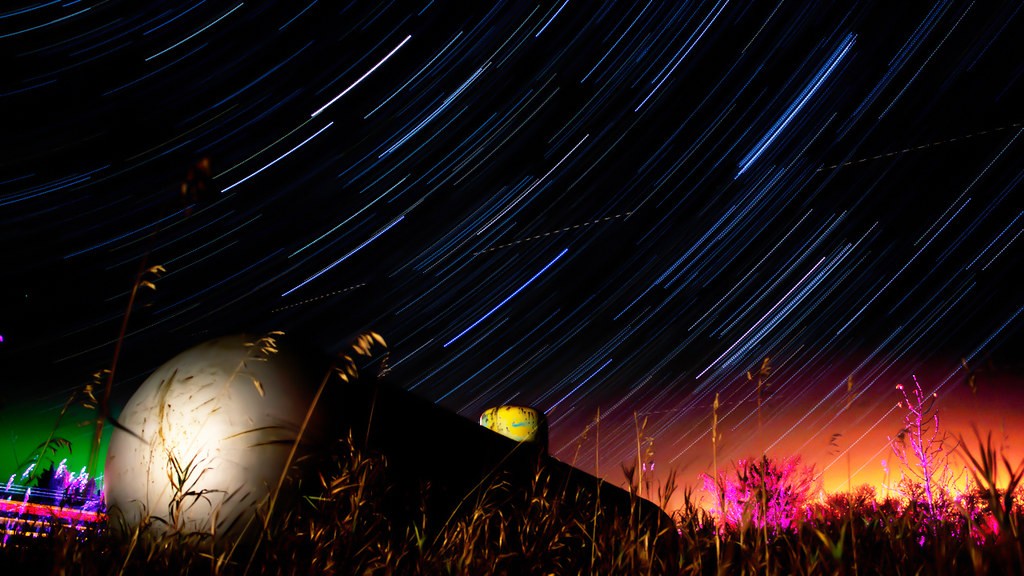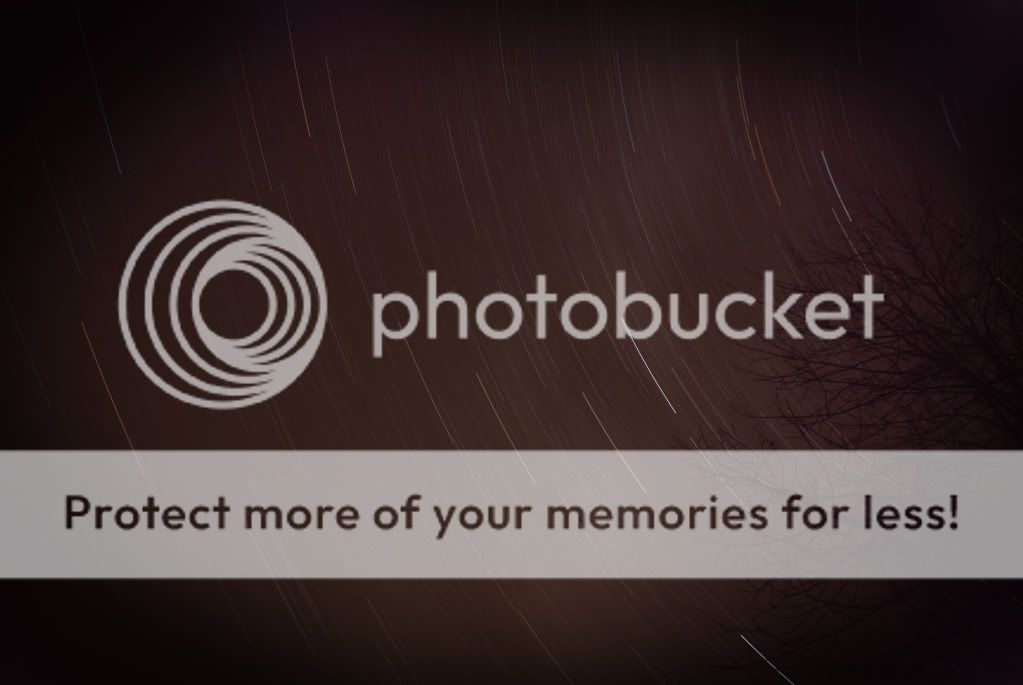You are using an out of date browser. It may not display this or other websites correctly.
You should upgrade or use an alternative browser.
You should upgrade or use an alternative browser.
Star trails.. Fail? OR not?
- Thread Starter D-B-J
- Start date
Bitter Jeweler
Been spending a lot of time on here!
- Joined
- Apr 27, 2009
- Messages
- 12,983
- Reaction score
- 4,999
- Location
- Cleveland, Ohio
- Can others edit my Photos
- Photos OK to edit
Did you add the vingette? I am not fond of it.
But neat star trails!
But neat star trails!
D-B-J
Been spending a lot of time on here!
- Joined
- Apr 13, 2010
- Messages
- 9,027
- Reaction score
- 2,175
- Can others edit my Photos
- Photos OK to edit
- Thread Starter 🔹
- #4
Did you add the vingette? I am not fond of it.
But neat star trails!
This was the only way to counteract the hot pink edges caused by the sensor heating up too much. It wasnt my personal choice, but i figured it looked better than hot pink edges..:lmao:
pgriz
Been spending a lot of time on here!
- Joined
- Jul 30, 2010
- Messages
- 6,734
- Reaction score
- 3,221
- Location
- Canada
- Can others edit my Photos
- Photos OK to edit
Actually, pretty good. You'd like to experiment by pointing at the celestial north pole (that's where Polaris, the North Star, is located), and finding an appropriate foreground to give context to the trails. When the shutter is open for a long time, sky fog (the reflected light from light sources near and far from you), becomes apparent - which is why dark sky locations are prized by amateur astronomers. Derrick's technique of stacking "short" exposures, has the benefit of recording the star trails while minimizing the sky fog.
DerekMellott
TPF Noob!
- Joined
- Sep 28, 2010
- Messages
- 156
- Reaction score
- 0
- Location
- Alberta
- Can others edit my Photos
- Photos OK to edit
I reprocessed this image and reduced the noise a bit, The next time I try this I will have to make the interval shorter, you can see the outer stars have breaks in the trail.

I also animated these trails.

I also animated these trails.
Last edited by a moderator:
DerekMellott
TPF Noob!
- Joined
- Sep 28, 2010
- Messages
- 156
- Reaction score
- 0
- Location
- Alberta
- Can others edit my Photos
- Photos OK to edit
Sorry, I forgot to to tell you how I feel about your image.
I like it, I like the composition and I don't even mind the vignette, good way to get rid of the pink edges.
I like it, I like the composition and I don't even mind the vignette, good way to get rid of the pink edges.
reznap
No longer a newbie, moving up!
- Joined
- Feb 2, 2010
- Messages
- 2,410
- Reaction score
- 64
- Location
- Ohio
- Can others edit my Photos
- Photos OK to edit
Next time you gotta stack multiply exposures like Derek did on his picture. It's a good first try though.. Having something in the foreground is a must. The outline of a tree is... ok, but having something more in the scene will make for a more dramatic photo I think.
D-B-J
Been spending a lot of time on here!
- Joined
- Apr 13, 2010
- Messages
- 9,027
- Reaction score
- 2,175
- Can others edit my Photos
- Photos OK to edit
- Thread Starter 🔹
- #11
Sorry, I forgot to to tell you how I feel about your image.
I like it, I like the composition and I don't even mind the vignette, good way to get rid of the pink edges.
Thanks!
D-B-J
Been spending a lot of time on here!
- Joined
- Apr 13, 2010
- Messages
- 9,027
- Reaction score
- 2,175
- Can others edit my Photos
- Photos OK to edit
- Thread Starter 🔹
- #12
Next time you gotta stack multiply exposures like Derek did on his picture. It's a good first try though.. Having something in the foreground is a must. The outline of a tree is... ok, but having something more in the scene will make for a more dramatic photo I think.
Whatcha mean, exactly?
Most reactions
-
 202
202 -
 179
179 -
 155
155 -
 130
130 -
 121
121 -
 107
107 -
 106
106 -
 103
103 -
 101
101 -
M
90
-
 89
89 -
 84
84 -
 64
64 -
 60
60 -
 54
54
Similar threads
- Replies
- 2
- Views
- 299







![[No title]](/data/xfmg/thumbnail/39/39460-55f4d48e22a9710f377f2a3dee45992e.jpg?1734173551)
![[No title]](/data/xfmg/thumbnail/40/40307-b3813381d3c1ef8282c72905405b50fe.jpg?1734174715)
![[No title]](/data/xfmg/thumbnail/40/40309-c759bfd4ae7c079632e7402d21d332f1.jpg?1734174717)



![[No title]](/data/xfmg/thumbnail/40/40306-ea393f71adcd88a9abb9fb16dc6af2d5.jpg?1734174714)